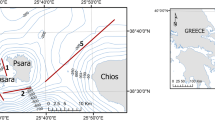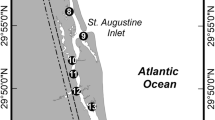Abstract
Seasonal sampling was carried out based on day/night, vertically stratified tows (100 or 125 m strata) in the upper 900 m of the water column over the mid-slope commercial fishing grounds south of Tasmania. A large midwater trawl (105 m2 mouth area) was used with an opening/closing cod-end. Subtropical convergence and subtropical species dominated the fauna, but many less abundant, more widely-distributed species were also present. Fishes, which contributed 89% of micronekton biomass and 135 of 178 species, were dominated by the Myctophidae (48% biomass and 48 species). Twenty micronekton species made up 80% of the total biomass. Overall, the micronekton fish biomass in this region was 2.2 g m−2 wet weight. A pronounced day/night shift in the distribution of biomass was attributable to diel migratory species. During the day, <0.2% of the total micronekton biomass was found in 0 to 300 m; most biomass was below 400 m, with peaks at 400 to 525 m and 775 to 900 m. At night, 53% of the biomass was found in 0 to 300 m, with progressively less in each deeper stratum. The vertical ranges of individual species typically exceeded 400 to 500 m during the day and night and were non-coincident, although nyctoepipelagic migrators were concentrated in the surface 200 m at night. Distinct epipelagic, lower and upper mesopelagic assemblages were identified, and patterns of epipelagic migration, limited migration and non-migration were categorised for species from each of the lower and upper mesopelagic assemblages. The vertical distribution of these assemblages was coincident with the primary water masses: subantarctic mode water (∼250 to 600 m) and antarctic intermediate water (below ∼700 m). The flux of migrating micronekton, estimated at 0.94 to 3.36 g C m−2 yr−1 to the lower mesopelagic and 1.14 to 4.06 g C m−2 yr−1 to the upper mesopelagic, appeared to be considerably outweighed by the consumption needs of aggregated mid-slope benthopelagic predators. We suggest that advection of mesopelagic prey in antarctic intermediate water may sustain aggregated populations of orange roughy (Hoplostethus atlanticus) and other predators on the micronekton in mid-slope depths at this site.
Similar content being viewed by others
Author information
Authors and Affiliations
Additional information
Received: 2 April 1997 / Accepted: 21 August 1997
Rights and permissions
About this article
Cite this article
Williams, A., Koslow, J. Species composition, biomass and vertical distribution of micronekton over the mid-slope region off southern Tasmania, Australia. Marine Biology 130, 259–276 (1997). https://doi.org/10.1007/s002270050246
Issue Date:
DOI: https://doi.org/10.1007/s002270050246




